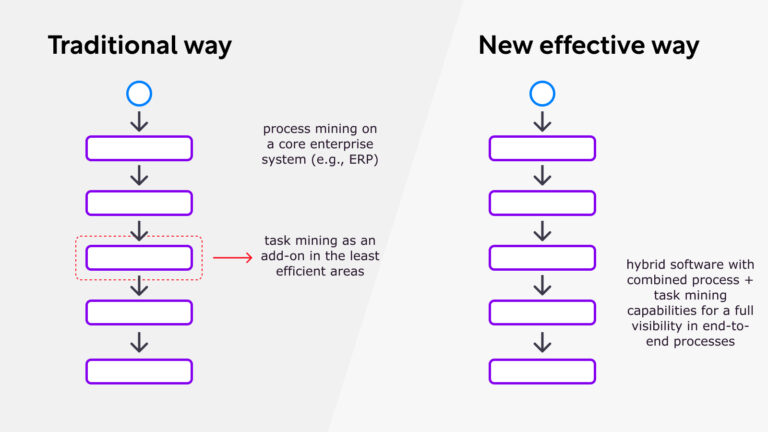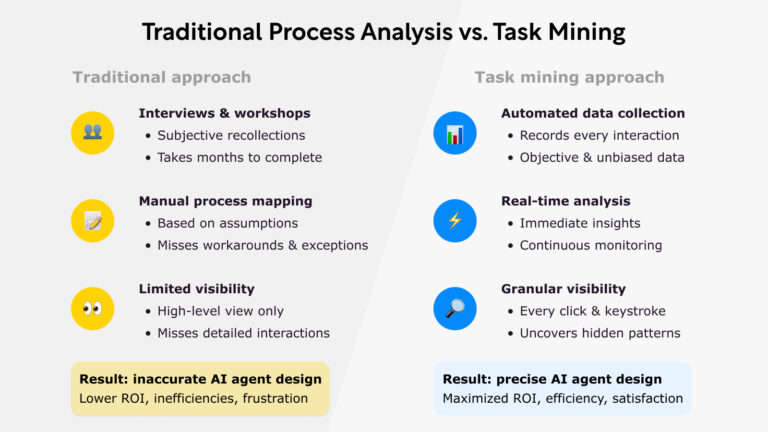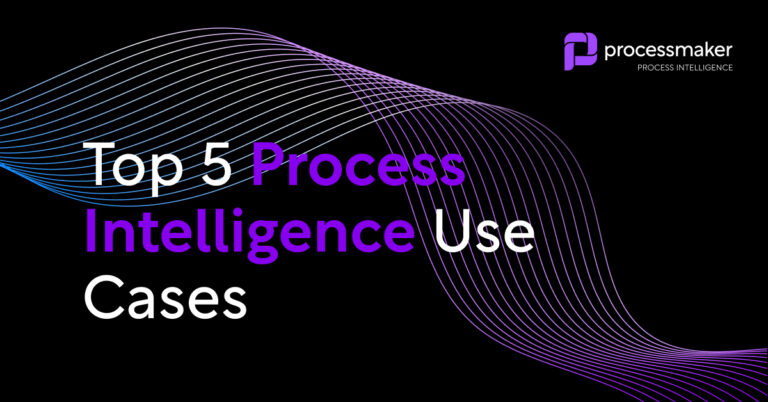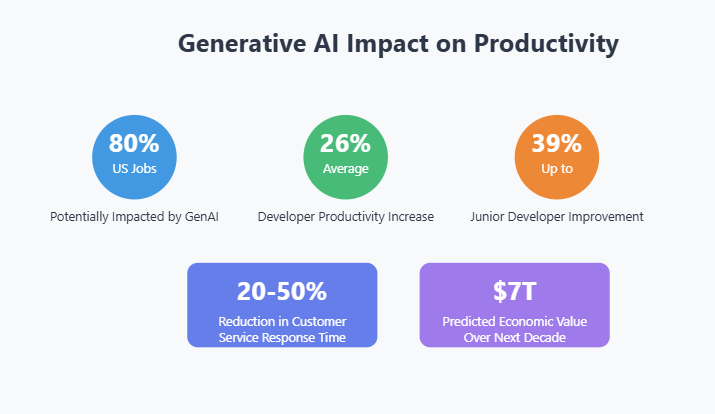Efficiency is not synonymous with productivity. Process mining vendors often advocate for companies to first understand the processes within their core IT systems before focusing on tasks. However, this approach falls short when dealing with task-intensive processes. This article will explore the reasons why.
A typical scenario in a global business process
Let’s explore the next scenario of global operations, involving three teams located in different regions. Each team is responsible for a specific segment of the process, with the subsequent team building upon the output generated by the preceding one.
After several months of running the same process, findings from process mining indicate that the Blue team has outperformed the other two teams in efficiency. Their throughput time is notably short, and their work efficiency exceeds that of both the Yellow and Pink teams. As a result, the Blue team receives commendation and rewards. Conversely, the Pink team has the longest throughput time, which has led to its recognition as the process bottleneck.
The reality, however, was quite different. The Pink team struggled to manage the cases coming from the Blue team, as they faced double the workload due to numerous fixes, rework, and incomplete information. It became evident that the Blue team had not adhered to the instructions properly, which not only created additional work for the Pink team but also prolonged their throughput time, even though they completed their own tasks swiftly.
Implementing task mining and process mining separately doesn’t make sense
Focusing solely on a single IT system can obscure the true reality of the situation, leading us to mistakenly believe that the Blue team is performing exceptionally well. Assessing compliance within just one IT system is not a viable approach. Yet, this is precisely how many companies have conducted process and task mining activities in recent years.
Initially, they use process mining to analyze workflows within a core enterprise system like SAP, pinpointing a bottleneck—in this case, the Pink team. Next, they apply task mining technology to this “broken” segment of the process, closely observing the efficiency of the Pink team by monitoring and micromanaging each task they undertake. Based on the insights gained from task mining, they will push the Pink team to work faster and become more efficient. However, it’s worth noting that, on a larger scale, the Pink team wasn’t even the real issue. Focusing on optimizing their performance might actually address the wrong problem.
Wrong problem – wrong solution
Analyzing a single, isolated IT system is ineffective in real-life scenarios, as it represents only a small part of the broader end-to-end process. While it may be tempting to extract event logs from one system to draw conclusions about the overall process, the reality is quite different. This approach often results in suboptimal or incorrect decisions.
The Pink team would ultimately feel demoralized due to unfair working conditions and some may choose to leave the company. The new team that replaces them is likely to encounter the same issues, while the company remains unaware of the true reasons behind the perceived “inefficiency” of the Pink team. In contrast, the Blue team enjoys salary increases and an annual paid company trip. On a broader scale, the company will continue to suffer from the significant costs associated with inefficient processes and a high employee turnover rate.
A better way to find a process bottleneck
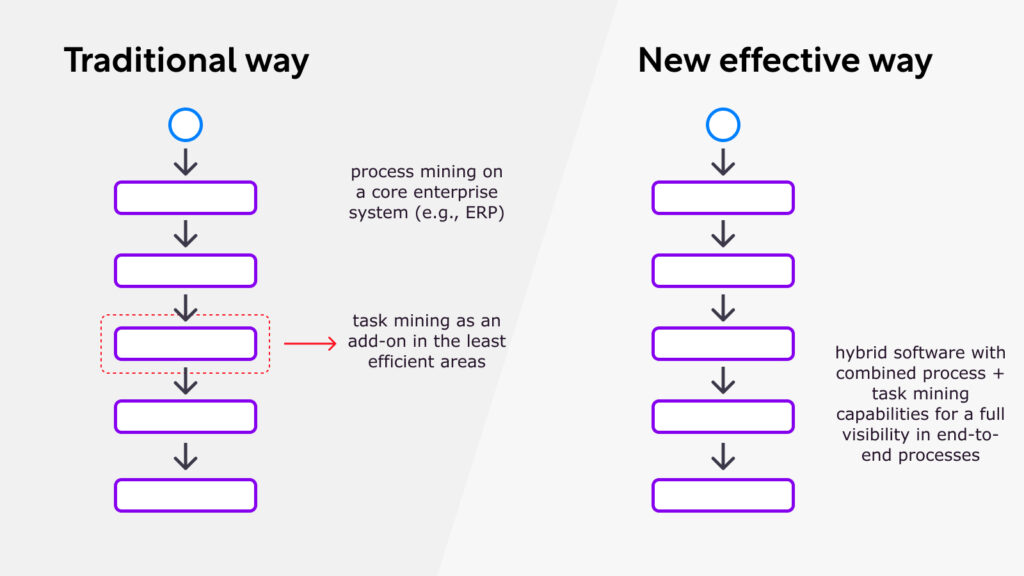
Cases like this happen regularly around the world. Executives often apply incorrect solutions to minor problems while overlooking more critical issues. It’s important to understand that process mining and task mining technologies should not be used in isolation; both need to be analyzed concurrently to achieve comprehensive visibility into business processes. A great example of this is process intelligence, a hybrid technology that seamlessly integrates process and task mining within a user-friendly platform.
